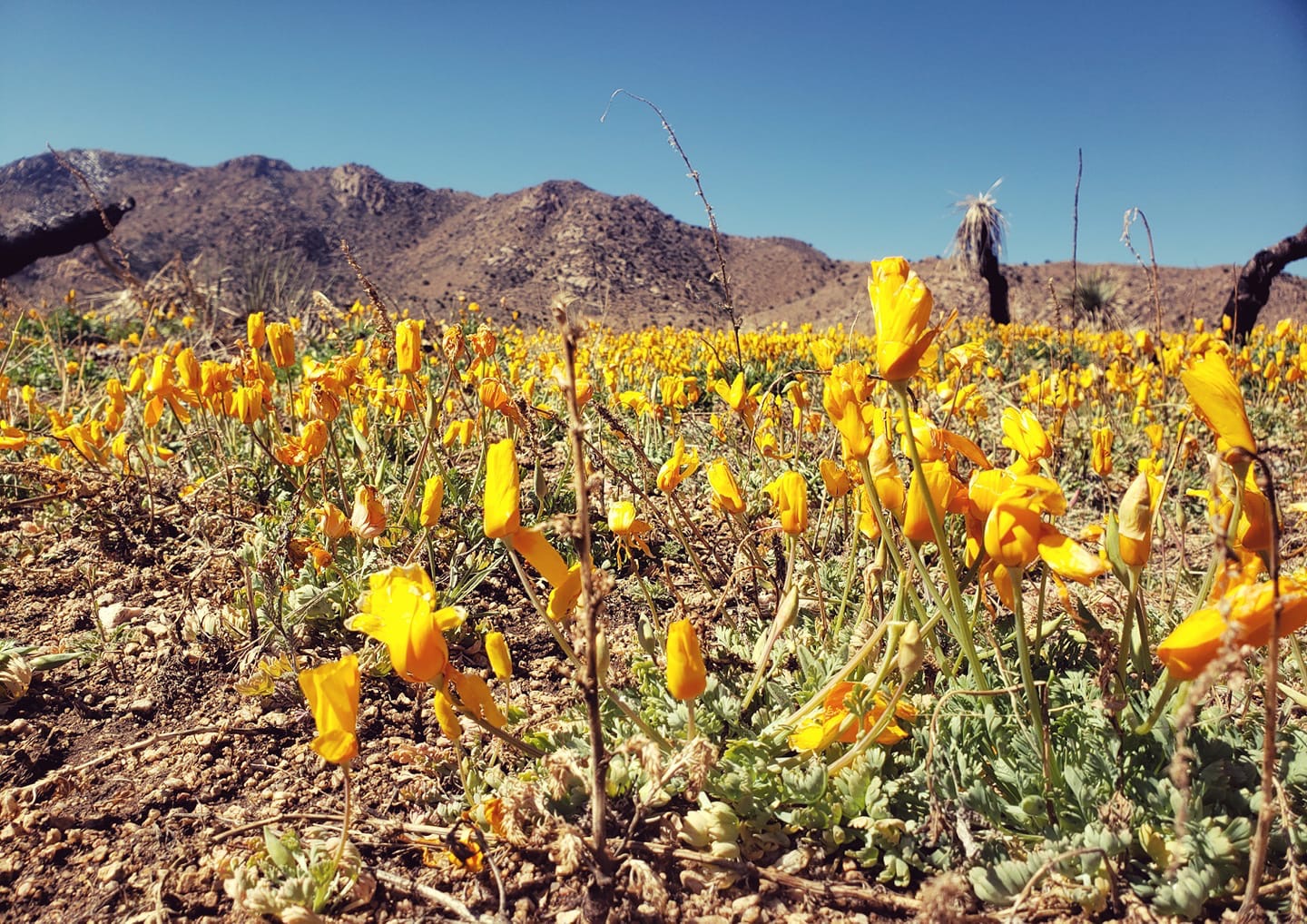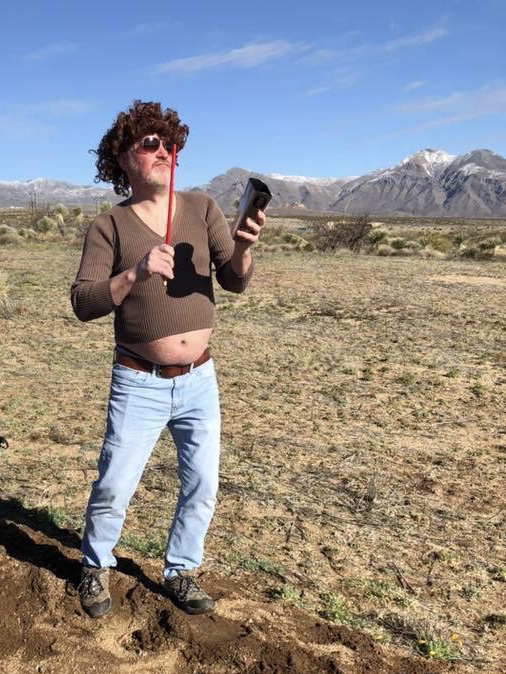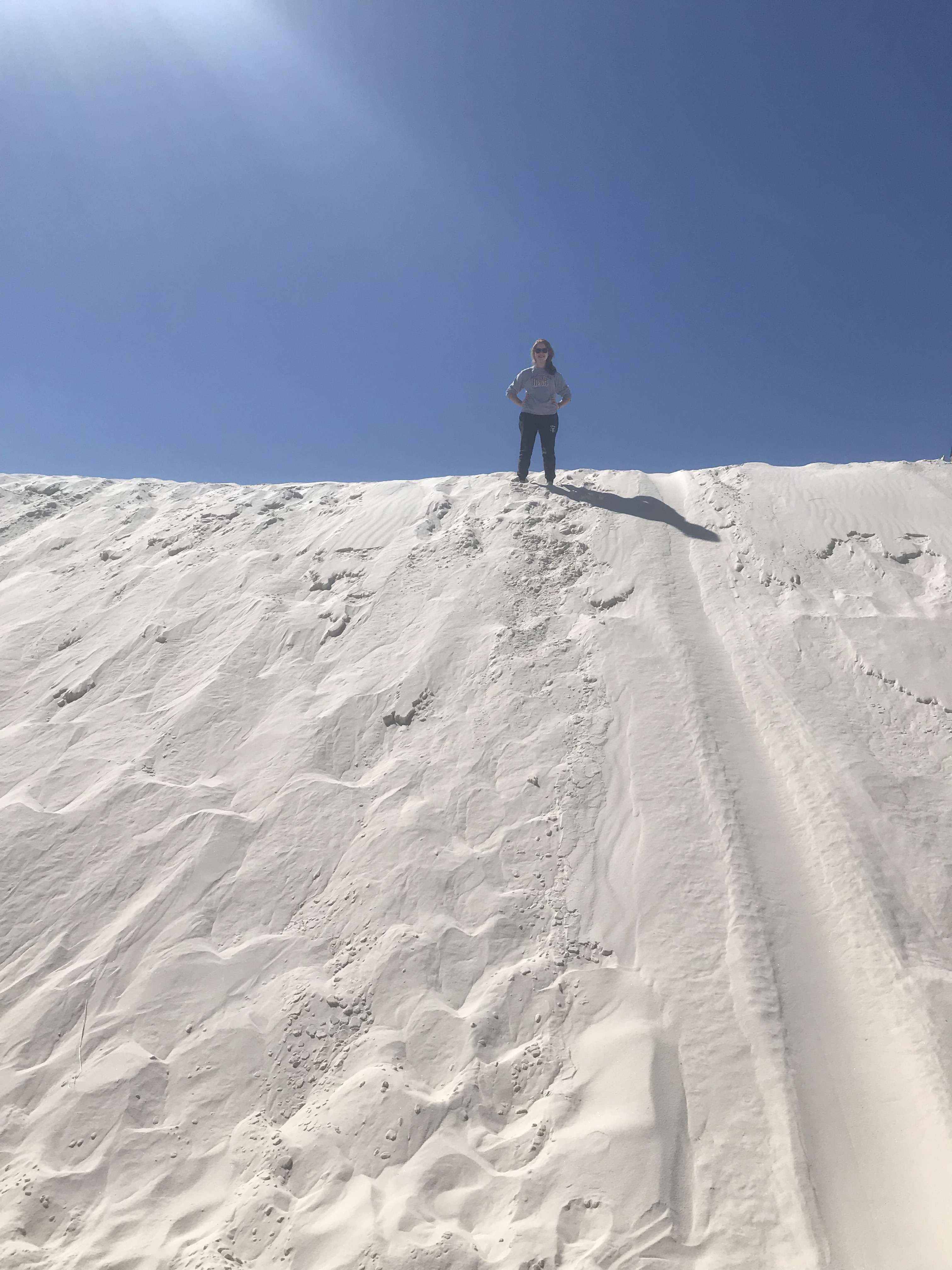Let me begin by stating that my experience at the Bataan Memorial Death March was an unusual one, by both design and luck. First, I chose to run/race the March, which put me in the minority. I think that to truly experience the March, a participant might choose to enter one of the heavy divisions and walk/march the course. This approach would give the participant more time to spend on the course, reflect on the meaning of the event, and revel in the comradery of the other marchers.
I, however, am on a mission to complete a marathon in under 4 hours in each state. While I contemplated letting go of this goal for this one event, in the weeks leading up to the March I realized that I wouldn’t be satisfied unless I tried to complete the course in under 4 hours. So I geared up for the unknown.
The other factor that made my experience unique was completely outside of my control. The weather was absolutely perfect this year. It was not perfect for sightseeing, but perfect for running a marathon. As we drove from Albuquerque to Las Cruces, it began to snow. People were posting pictures from White Sands, where there was a definite accumulation of the white stuff on the ground. I’m a Maine girl, so this was right up my alley! I wilt in the heat, but running in the snow is something I know how to do.
The snow did not stay around for race morning, but the effect of the snow was brilliant. It tamped down all the sand, making it easier to run on. This course has a limited amount of pavement, adding to its difficulty. There is also a section after mile 20 that is affectionately known as the Sand Pit, which was difficult, but not nearly as difficult as it would have been without the previous day’s snow. And, along with snow comes cooler temperatures. It was in the high 30s at the start and in the 50s by the end. Add in the fact that there was virtually no wind and the skies were crystal clear – you couldn’t have ordered up better conditions. Had they been any different, I likely would not have made my sub-4-hour goal.
Okay – so onto the logistics. As you may already know, the Bataan Memorial Death March is held on the Army’s White Sands Missile Range in White Sands, New Mexico. The event is held in honor of the brave service members who defended the Philippine Islands during World War II. Tens of thousands of U.S. and Filipino soldiers were forced to become prisoners of war, deprived of food, water, and medical attention, and marched 65 miles to confinement camps. Thousands died along the way and those who survived faced brutal conditions. Every year, a few survivors of the Death March attend this memorial event to tell their story, which makes it especially meaningful.
There are several different participation divisions available. Civilians may enter the light or heavy division, and there are military heavy and light divisions as well. Those who enter the heavy division must carry a 35-pound ruck sack during the March. I love the fact that marchers are encouraged to fill their sack with food, which they can donate at the finish line.
There are also opportunities for people to participate as a team, and ROTC entries too. Finally, there is a 14.1-mile Honorary March. I’m so proud to say that my husband and eldest daughter completed the Honorary March while I ran. This was a really big deal for my husband, who is not a fan of exercise, and a special opportunity to create some lifelong memories with our daughter.

You need to be on base by 6 a.m. (they say you need to be in your corral by that point, but they were flexible about that in 2019), and so some people choose to camp on base or sleep on a cot in the gym. I am not one of those people and so cannot comment on that experience. I will recommend, however, that anyone who participates in the March join the Facebook Bataan Memorial Death March Training Group. You will find an extraordinary group of individuals there and a wealth of information should you decide to stay on base.
We stayed in Las Cruces, which is about 30 minutes from the base. This year, they moved packet pick up to Las Cruces (it was previously on base), making it extremely convenient. Things you need to know – bring your passport or other form of a “Real ID.” The packet pickup was super easy, and the expo was small. The vendors were geared towards the military, which was to be expected. There was some good merchandise for sale. Also, if you want to hear the survivors’ presentation, you need to show up and be in line early. There is limited capacity in the auditorium, and we missed out. I really regret that.
If you stay in Las Cruces, do not, and I repeat, DO NOT, leave Las Cruces later than 4:30 a.m. on the day of the race. Leave earlier if being pressed for time concerns you. We left at 4:30 a.m. and got to the base around 5 a.m., but did not get through the security line and to our parking space until about 5:50 a.m. This made me stressed out about being in our corral by 6 a.m. (we were not) and so I was thankful that they were flexible about that requirement in 2019. Have your Real ID with you, as well as your parking pass printed and in your car. It states that you need evidence of car insurance, which I was concerned about because we had a rental car and I didn’t have my insurance card with me, but that was not a problem.
Runners enjoy the privilege of corralling right up at the front of the line. My husband and daughter were in the very back. Because the officials encouraged people to meet the survivors at the expo this year and NOT to stop to shake their hands at the start, it took my family just 15-20 minutes to get to the start line once the race began. This was a major change from years’ past, as I have heard it has taken back-of-the-pack participants over an hour to get to the start. So, all in all, some really great changes were instituted in 2019, and I hope they carry those forward.
The opening ceremony, which started at 6:30 a.m., was well-organized and profoundly moving. My advice is to plan your porta potty use so that you will be in your corral and present for the opening ceremony. The roll call of the survivors who are present at the March and the ones who passed away during the prior year is a haunting reminder of why you are there.

Opening ceremony
Photo cred: Jeanne Teuqor
Opening ceremony
Photo cred: Christine Estacion
In terms of the course – it was extremely well supported. I never lacked for hydration or encouragement. Although a remote course, it just seemed as though there were always supportive people around. And it was absolutely gorgeous. I’ve run Sedona, and maybe it was because of the dusting of snow that was still left on Mineral Hill, or maybe it is always that beautiful, but I would rank this course right up with Sedona’s beauty.

Photo cred: Jeanne Teuqor 
Photo cred: Margaret Moon 
Border Patrol along the course
Photo cred: Crystal Shinosky
Photo cred: Jessica Bokor-Sapyta
You start out on pavement/base roads, but that only lasts for a couple of miles. You then turn off and into an area where you should watch your footing to make sure you don’t turn an ankle. It’s a mix of hard-packed dirt/grass that makes it pretty bumpy. And then you are onto the dirt roads. Again, I’m not sure what they would be like in a typical year, but because of the previous day’s snow, I found them very runnable. In fact, the first time that I felt like the footing might prove to be an issue was on the first real hill, just before mile 8. At this point, I started to feel winded (perhaps due to the elevation), it was harder to get secure footing, and the incline was real. My speed dropped precipitously, and I got worried about my ability to meet my goal.
At mile 8, you turn to the right. At this point, you realize that this course is no joke. Fortunately, you get back on pavement and stay there for a few miles. The pavement gets you about half of the way up Mineral Hill. I’ll be candid – I thought that this hill was never going to end. It was really, really, tough and does not break until around the half-marathon mark.
I watched my pace steadily and did a lot of math. I figured that so long as I was at 2 hours or under at the half-marathon mark, I would be okay. In this race, what goes up comes down. I knew that for all the work I was putting in getting up this mountain (well, I’m going to call it a mountain, regardless of the word “Hill” in its name), I was going to reap the benefits of a long downhill stretch where I could recover. I figured that even with the fatigue that I knew would set in around mile 22, the time I could make up on the downhill section would get me safely to my sub-4-hour goal, so long as it didn’t take me more than 2 hours to get to the halfway mark.
This worked. I think I was somewhere around 1:58 at the halfway mark and I finished the marathon at 3:54. To me, these numbers are telling – despite the fact that I made up serious time on the downhill section, I was struggling big time at the end. But before I get to the final miles, I want to share this: When you get back on the pavement for the last mile or two of downhill, you are on the “stick” end of the lollipop. This means that you are running past all the folks who are just starting to make their way up the mountain. Most of these folks are military, in full gear and with 35-pound ruck sacks. Guys – these men and women were so amazing. They were all clapping and cheering us on, sending forth words of encouragement, smiles, and respectful nods of the head. I wanted to stop and personally thank each one of them. What I was doing was nothing – I was running with zero extra weight and in the most breathable, comfortable clothing possible. I was doing what I loved, for the sheer fun of it. It was they who were working hard and memorializing the sacrifice that they, and all of those who have gone before them, make so that I can engage in my hobby with the ultimate freedom. I was actually sort of glad when I got to mile 20, which is when you get back on course with the Honorary Marchers, because I was feeling a little overcome by emotion.
It’s a little crowded for the next few miles as runners weave through the Honorary Marchers. I won’t lie – this was the one time I felt a little aggravated on the course. It was also somewhere around this point that fatigue set in. Other than the “Sand Pit,” there is nothing particularly hard about the course after mile 20. But you cannot exert the type of energy that you need to expend on Mineral Hill without having it catch up with you at this point. I just focused on the pace I needed to make my goal and shuffled through the last few miles.

Post-race, there is a free lunch (burgers, potato salad, etc.) I can’t eat that stuff, but Adam and my daughter did and said it was good. And there are showers on base. In fact, here is my super-secret inside tip, passed down to me by a fabulous lady at the expo. Most people know that there are showers in the gym. But those showers are very crowded, especially because a lot of Marchers stay in the gym. Virtually no one, however, realizes that the pool is also open. Grab yourself a map of the base from the media table at the expo and find your way to the aquatic center. You can walk right in the back doors to the locker room and you will have the place to yourself. Best tip ever.
We made a road trip out of this marathon and saw a whole lot besides White Sands. We flew into Las Vegas, drove over to Williams, AZ, and toured the Grand Canyon. While in Williams, we also went to Bearizona, which is a drive-through wildlife park that is not to be missed if you are in the area with kids. I recommend driving through once and then hopping on the bus tour, which goes through again. Our driver was very informative and because you are on a bus, you can stop for longer periods for observation.
Also, if you are going through Albuquerque prior to the race, check and see if the Chocolate and Coffee festival is going on. It was a fabulous way to sample local chocolate, coffee, and other treats. I picked up the most beautiful boxes of hand decorated chocolates for our friends back home who were helping us while we were gone.
After the marathon we went down to the White Sands National Monument. Bring your sunglasses! It is astonishingly gorgeous and bright. You can also purchase plastic disc sleds at the gift store before you drive in and you can sled down the sand dunes. You might think I’m crazy for climbing up sand dunes after running the Death March, but when your 12-year-old asks to go sledding down sand dunes in New Mexico with you, there is no other answer but “you bet!”

We had to drive back up to Albuquerque to catch a plane that night, but had one more stop to make. About 90 minutes north of White Sands is a town called Truth or Consequences, where we booked a 1-hour session in a private natural hot spring at Riverbend Hot Springs. It was reasonably priced ($45 for the three of us), a unique experience, and EXACTLY what we needed after the March and before flying home.
This trip was super special to me. Not only did the March carry special meaning, it turned out that my youngest daughter was not interested in coming on this trip. I missed her madly while we were away, but the silver lining was that Adam and I spent five days with our eldest, and you just don’t get many opportunities for one-on-one time like that. I hope that we have a similar experience with our youngest in the next couple of years, because once they hit middle school, the time just flies by. Bottom line: If you are interested in Bataan, you should definitely do it! There won’t be many more years of survivor attendance left, so get out there soon. You will not regret it!
P.S. – Elena Paulina captured the photograph of the Marchers at sunrise at the beginning of this post.
“The point is whether or not I improved over yesterday. In long-distance running the only opponent you have to beat is yourself, the way you used to be.”
Haruki Murakami
